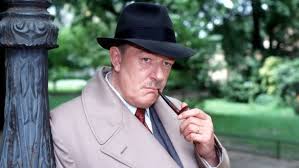
Silence. It’s said to be golden, but it’s more than that. It’s a writer’s tool. It’s a speaker’s tool. For how writers use it in interviewing, let’s listen to biographer Robert A. Caro in his paragraph-sized essay, “Tricks of the Trade” from the book Working:
“Interviews: silence is the weapon, silence and people’s need to fill it—as long as the person isn’t you, the interviewer. Two of fiction’s greatest interviewers—Georges Simenon’s Inspector Maigret and John le Carrés George Smiley—have little devices they use to keep themselves from talking, and let silence do its work. Maigret cleans his ever-present pipe, tapping it gently on his desk and then scraping it out until the witness breaks down and talks. Smiley takes off his eyeglasses and polishes them with the thick end of his necktie. As for myself, I have less class. When I’m waiting for the person I’m interviewing to break a silence by giving me a piece of information I want, I write ‘SU’ (for Shut Up!) in my notebook. If anyone were ever to look through my notebooks, he would find a lot of ‘SUs’ there.”
So simple, yet so difficult to do: keep quiet. Let silence do its work. And you don’t have to be an interviewer. You can be anyone trying to get anything out of anybody.
As for speakers, I give you the pause. The pregnant pause—so pregnant it’s in the third trimester. At poetry readings, a slight pause at a strategic point in a poem often does wonders for a work read aloud.
And we all know silence’s value in joke-telling. Some people are good at telling jokes, and those people all share one thing in common—a sense of timing.
They know when to wait. Pause. Shut up. Then they reap the benefits.